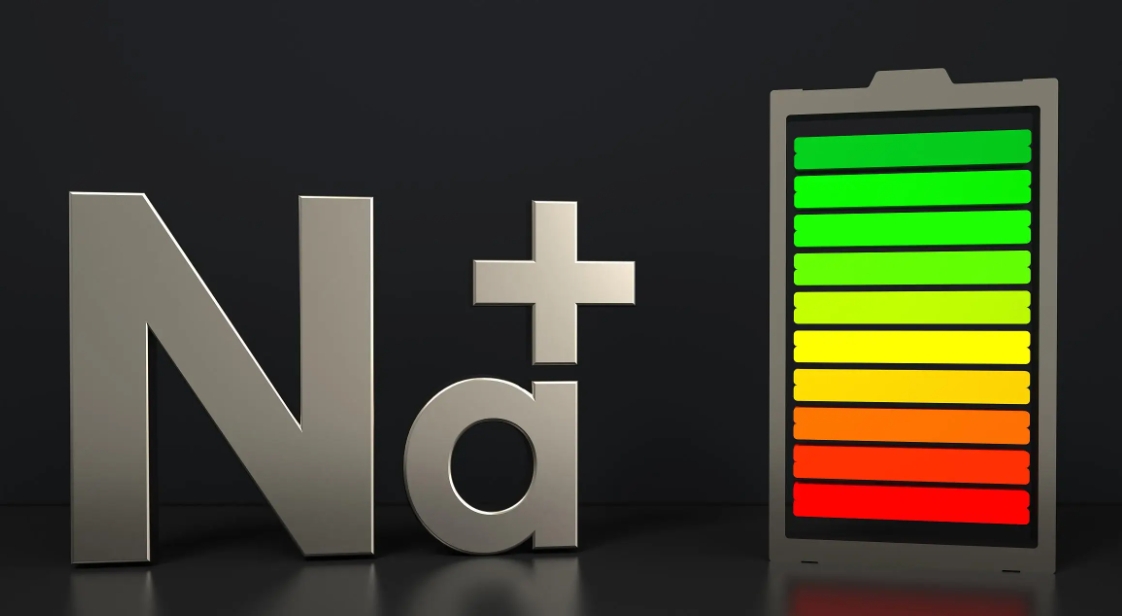Sodium-ion battery
Guoan Energy Technology (Dongguan) Co., Ltd. R&D Center Editor
A sodium-ion battery is a type of rechargeable battery that primarily relies on the movement of sodium ions between the positive and negative electrodes to function, similar to the working principle of a lithium-ion battery. It was one of the top ten emerging technologies in chemistry in 2022. In December 2018, Professor Xia Hui of Nanjing University of Science and Technology, in collaboration with a domestic and international team, pioneered structural design and control methods, making significant progress in the research of manganese-based cathode materials.

Working Principle: During charging and discharging, Na+ ions intercalate and deintercalate between the two electrodes: during charging, Na+ ions deintercalate from the positive electrode and intercalate into the negative electrode through the electrolyte; the reverse happens during discharging. The new 18650 sodium-ion battery uses sodium-ion transfer (instead of lithium-ion) to store and release electrical energy.
Technological Advantages: Researchers have identified the specific material as a trade secret. LITEN collaborating researcher Loïc Simonin noted: "Its energy density can rival that of lithium-ion batteries such as lithium iron phosphate." Sodium-ion batteries primarily use sodium salts as electrode materials, which are more abundant and cheaper than lithium salts. Because sodium ions are larger than lithium ions, sodium-ion batteries are a cost-effective alternative when weight and energy density requirements are not high.
Compared to lithium-ion batteries, sodium-ion batteries have the following advantages:
(1) Abundant reserves and low cost of sodium salt raw materials. Using iron, manganese, and nickel-based cathode materials reduces raw material costs by half compared to lithium-ion battery ternary cathode materials;
(2) Due to the characteristics of sodium salts, low-concentration electrolytes can be used (at the same concentration, the conductivity of sodium salts is about 20% higher than that of lithium electrolytes), reducing costs;
(3) Sodium ions do not form alloys with aluminum, and aluminum foil can be used as a current collector for the negative electrode, which can further reduce costs by about 8% and weight by about 10%;
(4) Due to the lack of over-discharge characteristics in sodium-ion batteries, they can be discharged to zero volts.
The energy density of sodium-ion batteries is greater than 100 Wh/kg, comparable to lithium iron phosphate batteries, but their cost advantage is significant, and they are expected to replace traditional lead-acid batteries in large-scale energy storage.
Existing Risks: Most sodium-ion batteries contain liquid electrolytes, posing a flammability risk.
Research History: Research on sodium-ion batteries began in the late 1970s and early 1980s. Early electrode materials such as MoS2, TiS2, and NaxMO2 had unsatisfactory electrochemical performance, and development was very slow. Finding suitable sodium-ion electrode materials is one of the keys to the practical application of sodium-ion energy storage batteries. Since 2010, a series of positive and negative electrode materials have been designed and developed based on the characteristics of sodium-ion batteries, with significant improvements in capacity and cycle life, such as hard carbon materials, transition metals and their alloy compounds as anodes, and polyanionic, Prussian blue, and oxide materials as cathodes. In particular, layered NaxMO2 (M = Fe, Mn, Co, V, Ti) and its binary and ternary materials have shown good charge-discharge specific capacity and cycle stability. Because sodium ions are relatively larger, more energy is required to drive the movement of ions, which was once the most troublesome problem for this new battery technology, until scientists used carbon as a driving medium, similar to carbon core batteries, allowing the energy efficiency of sodium-ion batteries to reach more than 7 times that of lithium batteries, and the number of rechargeable cycles is also greater. In addition, the problem of liquid memory of sodium ions has also been overcome.
Since 2011, Researcher Hu Yongsheng and his team at the Institute of Physics, Chinese Academy of Sciences, have been dedicated to the research and development of safe, environmentally friendly, low-cost, and high-performance sodium-ion battery technology. They have developed low-cost copper-based cathode materials, coal-based carbon anode materials, and low-salt-concentration electrolytes. Their core patents have been authorized in China, the United States, Japan, and the European Union. In 2017, a pilot production line for hundreds of tons of positive and negative electrode materials and a battery line with a megawatt-level production capacity were built. Sodium-ion batteries with an energy density of 150 Wh/kg and a cycle life of 4500 weeks were developed, and demonstration applications of electric bicycles, the world's first low-speed electric vehicle using sodium-ion batteries, and the first 100 kWh sodium-ion battery energy storage power station were completed. The world's first 1 MWh sodium-ion battery energy storage and charging intelligent microgrid system was also developed. The sodium-ion battery products can meet the needs of various low-speed electric vehicles such as bicycles and electric boats, and can also be used for home/industrial energy storage, 5G base stations and data center backup power supplies, and are suitable for large-scale energy storage applications such as renewable energy grid access and distributed energy storage.
On November 30, 2015, a French research team made a major breakthrough in rechargeable battery materials. "18650" lithium batteries are widely used in laptops, LED flashlights, and Tesla Model S cars, but researchers at the French National Center for Scientific Research have developed the industry-standard 18650-size sodium-ion battery for the first time.
Supported by the National Natural Science Foundation of China and the National 973 Plan, Professor Ma Zifeng's research group at Shanghai Jiao Tong University, starting from the perspective of industrial application, used graphene oxide to modify [Na2/3[Ni1/3 Mn2/3]O2 electrodes, preparing binder-free, high-conductivity flexible electrodes. Under 0.1C to 10C charge-discharge cycle conditions, good capacity and cycle performance were obtained. The research group also used inexpensive Prussian blue-like materials (NaMFe(CN)6) to construct high-capacity, long-cycle-life sodium-ion battery cathode materials by optimizing the molecular structure within the crystal. Its specific capacity reached 118.2 mAh/g (10 mA/g). For the first time internationally, this material was used with hard carbon anode materials to prepare a prototype energy storage sodium-ion battery, with an energy density of 81.72 Wh/kg, twice that of lead-acid batteries, laying a good technical foundation for the industrialization of energy storage sodium-ion batteries.
In December 2018, Professor Xia Hui of Nanjing University of Science and Technology, in collaboration with a domestic and international team, pioneered structural design and control methods, making significant progress in the research of manganese-based cathode materials, making low-cost sodium-ion batteries promising to replace lithium-ion batteries. The relevant results were published in Nature Communications. The specific capacity of the electrode made of this cathode material reached 211.9 mAh/g, while the specific capacity of commercially available lithium battery cathode materials is about 140 mAh/g. During the charge-discharge process, the structure of this cathode material is stable without phase change, and the volume change is only 2%. After 1000 cycles of charge-discharge, the capacity retention rate is as high as 94.6%, while the general capacity retention rate standard in the battery industry is about 80%.
On July 29, 2021, CATL officially launched its sodium-ion battery. CATL stated that, overall, the energy density of the first-generation sodium-ion battery is slightly lower than that of the current lithium iron phosphate battery, but it has obvious advantages in low-temperature performance and fast charging, especially in high-power applications in cold regions.
In November 2020, a research paper on sodium-ion batteries, "Rational design of layered oxide materials for sodium-ion batteries," co-authored by researcher Hu Yongsheng from the Institute of Physics, Chinese Academy of Sciences, and an international team, was published in the world-renowned academic journal Science. This research proposed a simple method for predicting the configuration of layered sodium-ion oxides and experimentally confirmed the effectiveness of this method, providing theoretical guidance for the design and preparation of low-cost, high-performance layered oxide cathode materials for sodium-ion batteries. This research achievement was selected as one of the 30 candidate achievements for the Top Ten Advances in Chinese Science in 2020.
In December 2020, Hu Yongsheng's team compiled the research progress made in the past decade in the basic research and engineering exploration of sodium-ion batteries, combined with the outstanding achievements made by domestic and foreign experts and scholars in the field of sodium-ion battery technology in the past four decades, to write "Science and Technology of Sodium-ion Batteries." This book systematically summarizes the current research status of sodium-ion batteries and focuses on discussing key issues related to sodium-ion batteries. On April 19, 2022, Hunan Cubic New Energy Technology Co., Ltd. held a launch conference for its first-generation sodium-ion battery. The first-generation sodium-ion battery can be charged to over 80% in 15 minutes and is expected to take the lead in the development of next-generation energy storage batteries. Cubic's first-generation sodium-ion battery uses independently synthesized layered oxide cathodes and commercially available high-efficiency hard carbon anodes, featuring high charge-discharge rates, high safety and reliability, and excellent low-temperature performance.
On the morning of November 29, 2022, the global first gigawatt-hour (GWh)-level sodium-ion battery production line product launch ceremony was held in Fuyang City, Anhui Province.
Guoan Energy Technology (Dongguan) Co., Ltd. R&D Center Editor
Service Hotline
Email:zhangjie@ganeny.com
Website:www.ganeny.com
Address: No. 79, Shayuan Road, Shabu, Dalang Town, Dongguan City, Guangdong Province, China

Official Public Account
Privacy Policy | SEO | Support:300.cn
